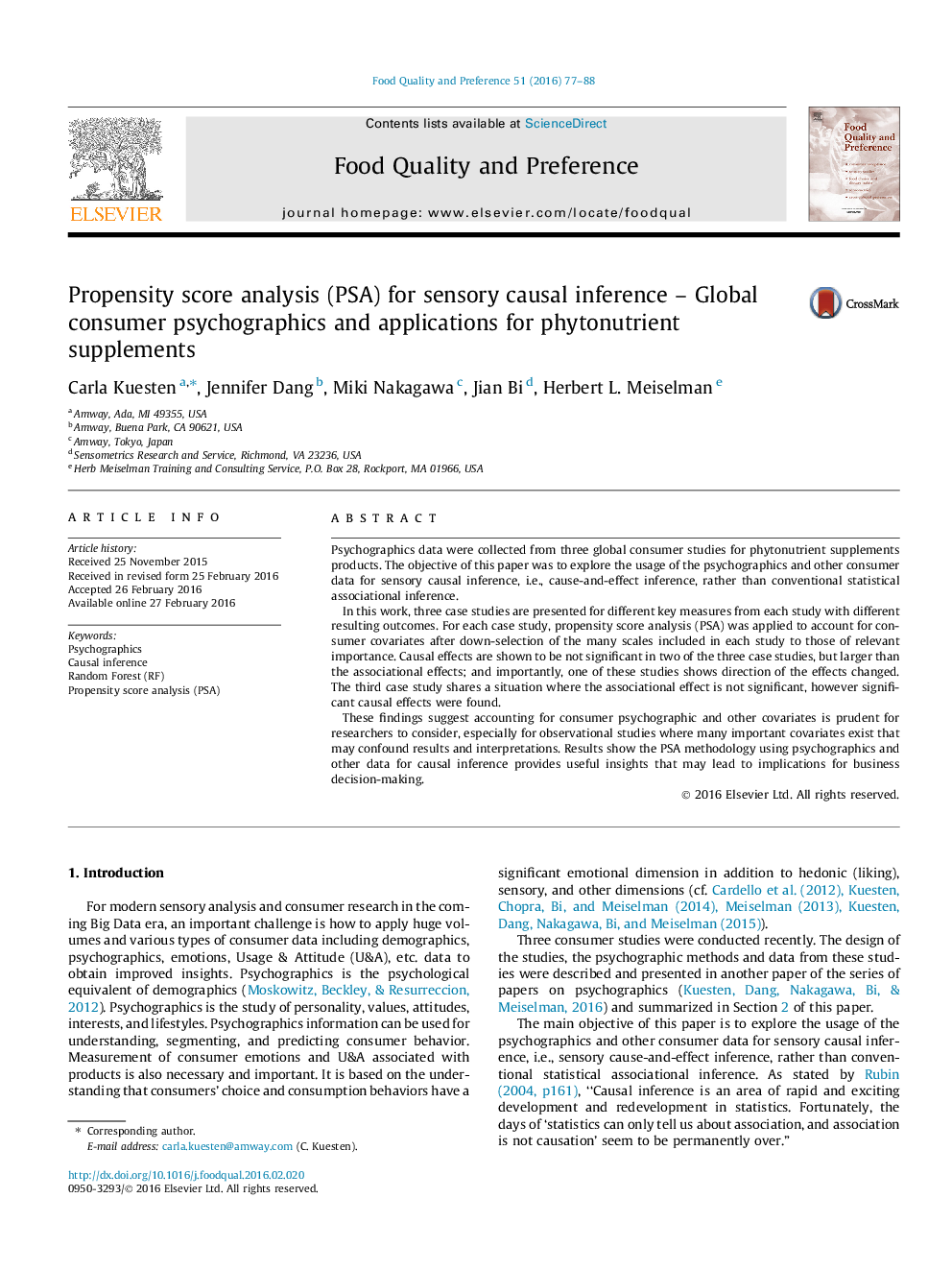| Article ID | Journal | Published Year | Pages | File Type |
|---|---|---|---|---|
| 4316865 | Food Quality and Preference | 2016 | 12 Pages |
•Global psychographics data were collected for phytonutrient supplements.•Random Forest (RF) was used to select important psychographics for key measures.•PSA was applied using psychographics and other attributes as covariates for sensory causal inference.•PSA and causal inference for future use in sensory and consumer research.
Psychographics data were collected from three global consumer studies for phytonutrient supplements products. The objective of this paper was to explore the usage of the psychographics and other consumer data for sensory causal inference, i.e., cause-and-effect inference, rather than conventional statistical associational inference.In this work, three case studies are presented for different key measures from each study with different resulting outcomes. For each case study, propensity score analysis (PSA) was applied to account for consumer covariates after down-selection of the many scales included in each study to those of relevant importance. Causal effects are shown to be not significant in two of the three case studies, but larger than the associational effects; and importantly, one of these studies shows direction of the effects changed. The third case study shares a situation where the associational effect is not significant, however significant causal effects were found.These findings suggest accounting for consumer psychographic and other covariates is prudent for researchers to consider, especially for observational studies where many important covariates exist that may confound results and interpretations. Results show the PSA methodology using psychographics and other data for causal inference provides useful insights that may lead to implications for business decision-making.
